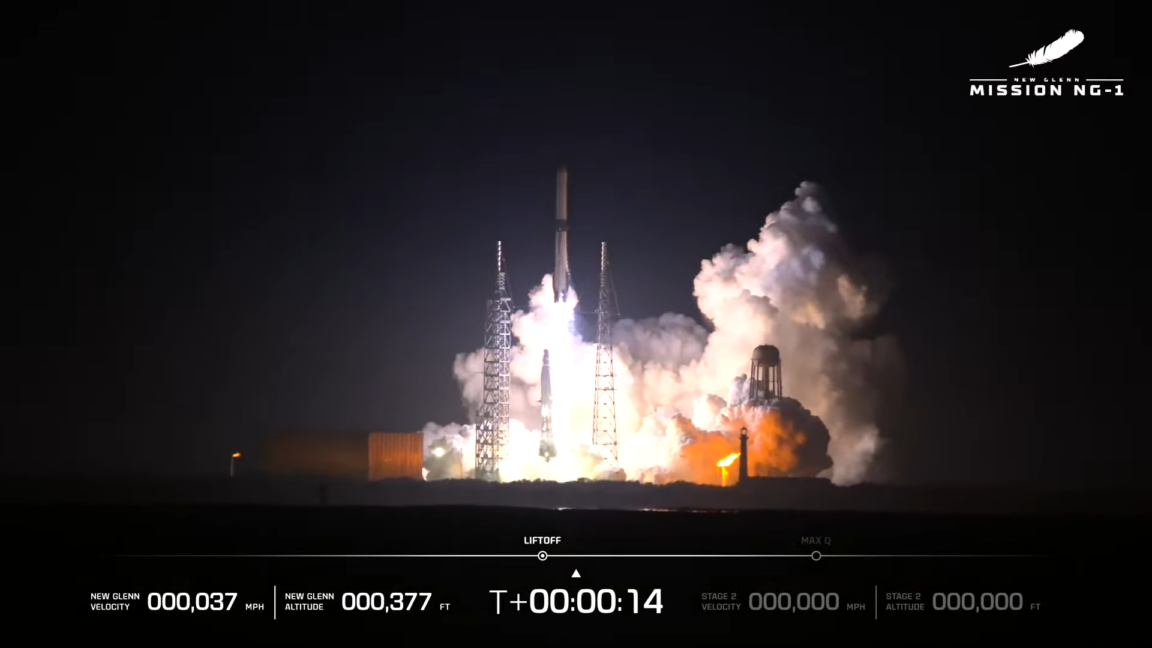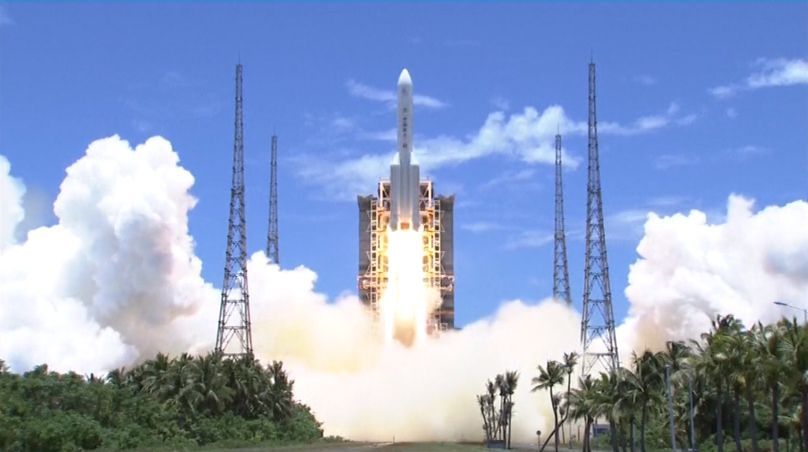
Blue Origin reaches orbit on first flight of its titanic New Glenn rocket
The thrust-to-weight of the rocket must have been in the vicinity of 1.0 to 1.2, so the booster had to burn a little liquid methane and oxygen before it could begin to climb appreciably. But finally, seconds into the mission, New Glenn did begin to climb. It was slow, ever so slow. But it flew true.
After that the vehicle performed like a champion. The first stage burned for more than three minutes before the second stage separated at an altitude of 70 km. Then, the upper stage's two BE-3U engines appeared to perform flawlessly, pushing the Blue Ring pathfinder payload toward orbit. These engines burned very nearly for 10 minutes before shutting down, having reached an orbital velocity of 28,800 kph.
For the first time since its founding, nearly a quarter of a century ago, Blue Origin had reached orbit. The long-awaited debut launch of the New Glenn rocket, a super-heavy lift vehicle developed largely with private funding, had come. And it was a smashing success.
The only downer came a little bit later when Blue Origin's Ariane Cornell confirmed that the first stage did not successfully return to Earth. "We did in fact lose the booster," Cornell said during the company's webcast. Far below in the Atlantic Ocean the drone ship Jacklyn awaited, a lone and lonely sentinel, with no rocket to catch.








:focal(938x536:0x0)/cloudfront-us-east-2.images.arcpublishing.com/reuters/NIVM47UJNVIB7FLZTHAUZTTAMU.jpg)
















